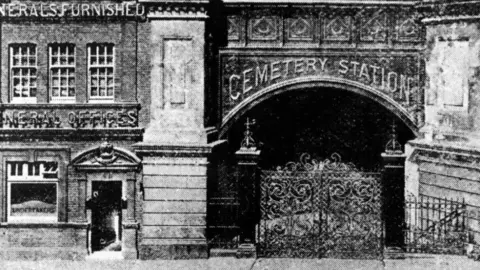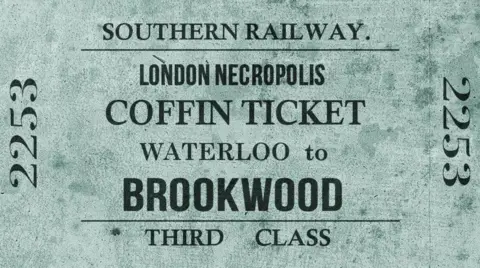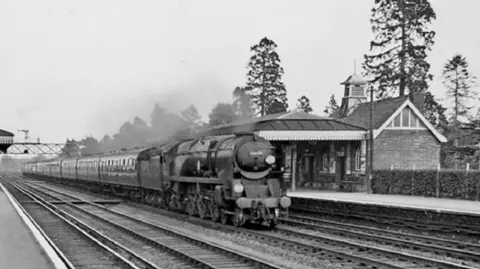Behind Surrey's 'bizarre' Victorian coffin train
 John Clarke
John ClarkeWalking through the woodlands in Surrey's Brookwood Cemetery, very few indicators remain of its connection to one of the UK's most "bizarre" railway services.
In the mid-19th Century, thousands of bodies a year would arrive on trains from Waterloo to Woking with carriages for both the living and the dead.
Historian John Clarke said: "It was a very unusual if not bizarre railway service."
Now, walking through the cemetery, all that remains is fields of unmarked graves for some of Victorian London's richest and poorest.
"I find it very moving to walk through here at times remembering all the people who are buried here in unmarked graves," said Mr Clarke.
He said because some of them were pauper graves "there was no right to erect a permanent memorial".
Founded by a private act of Parliament in 1852, the London Necropolis was intended to hold "all of London's dead forever", Mr Clarke said.
 John Clarke
John ClarkeMore than 2,000 acres of land was bought from Lord Onslow, the lord of the manor for Woking, to build the cemetery in response to a major cholera epidemic causing a build up of "burial congestion".
Trains would be loaded from a specially built station in Waterloo before mourners and coffins would make the journey to Brookwood station, where services would be diverted straight into the grounds of the cemetery.
Despite separate carriages for passengers and coffins, the train still operated a strict three-class system for both the living and the dead.
First and second class mourners, and their dead, would be boarded on to the train with the names of their loved ones announced as their coffins were brought onto the train.
 John Clarke
John ClarkeFor third class, however, mourners would be segregated into a separate waiting room as to not mingle with the upper classes, before being ushered into a communal carriage with far less pomp and circumstance.
By 1856, more than 2,000 bodies a year were being transported by the train to the cemetery, now fitted with refreshment rooms.
Fares ranged from two to six shillings for passengers and from two shillings and six pence to a pound for coffins, but prices fixed by the act of Parliament meant that, by World War Two, these had become incredibly cheap.
The train ran until April 1941, when its special Waterloo platform was destroyed in the Blitz.
Now the railway has long since gone, but Brookwood railway station still gives mourners direct access to what remains one of the largest cemeteries in the UK.
But, with two black lines in the tarmac path, enduring reminders still remain of one of the more morbid chapters of Surrey's railway history.
Follow BBC Surrey on Facebook, on X, and on Instagram. Send your story ideas to [email protected] or WhatsApp us on 08081 002250.
